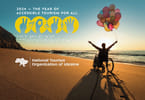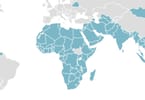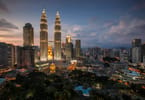Governments in the Middle East should be putting more effort into protecting their natural environments and creating more protected areas, an environmental organization says.
Tariq Abu Al-Hawa, program coordinator of the Protected Areas Project at the International Union for the Conservation of Nature (IUCN) said the Middle East’s natural habitats are threatened by excessive use of natural resources, increasing the fragility of eco-systems.
“Over grazing is one of the main issues that’s traditionally been practiced in the region,” Abul Hawa told The Media Line. “It can take away the representation of plant-cover diversity from our desert eco-systems, exerting major impacts on the stability of the soil, the stability of the natural habitats, and consequently affecting the higher levels of the food chain, the limited distribution of wild animals and birds.”
Over grazing and over hunting can eliminate whole sections from the eco-system, which can be detrimental to ecology and habitats of the region, he said.
Middle Eastern countries are trying to follow a global trend to increase the surface declared as protected areas and manage these areas more effectively.
A protected area, as defined by the IUCN, is an area of land or sea, or both, “especially dedicated to the protection and maintenance or biological diversity and of natural and associated cultural resources and managed through legal or other effective means.”
“The [Middle East] still has limited surface area covered under protection but it gets smaller when we talk about the effectiveness of the management of those areas,” Abu Al-Hawa said.
Tourism is one incentive that has increased protected areas in some countries such as Jordan, where the number of eco-tourists jumped from a few hundred in the 1990s to more than 100,000 today.
“Yemen and Oman are among the best sites where you can seek desert tourism and nature based tourism,” he said.
However, he added that the tourism infrastructure in these countries was still in the preliminary stages and issues such as access and site management posed challenges to tourists interested in traveling there.
He cited Jordan and Lebanon as small countries with small protected areas that have managed to develop models for nature-based tourism linked to the desert.
However, he cautioned that tourism can also be a liability if it is not handled properly.
“Sometimes the introduction of tourism in a rushed manner can be detrimental to protected areas,” he said.
“Eco-tourism is not contributing significantly to protected-areas management in our region, but it’s an opportunity that everyone can utilize. There are many issues related to community participation and empowerment, raising awareness and education. Building capacity is also required to develop tourism in a fashion we’d like to see.”
The IUCN brings together more than 80 states, 110 government agencies, 800 NGOs, and 10,000 scientists and experts from 180 to promote sustainable management and conservation of natural resources and bio-diversity throughout the world.
Rachelle Kliger is a staff writer for The Media Line (www.medialine.org).
WHAT TO TAKE AWAY FROM THIS ARTICLE:
- A protected area, as defined by the IUCN, is an area of land or sea, or both, “especially dedicated to the protection and maintenance or biological diversity and of natural and associated cultural resources and managed through legal or other effective means.
- “It can take away the representation of plant-cover diversity from our desert eco-systems, exerting major impacts on the stability of the soil, the stability of the natural habitats, and consequently affecting the higher levels of the food chain, the limited distribution of wild animals and birds.
- Tariq Abu Al-Hawa, program coordinator of the Protected Areas Project at the International Union for the Conservation of Nature (IUCN) said the Middle East's natural habitats are threatened by excessive use of natural resources, increasing the fragility of eco-systems.






















